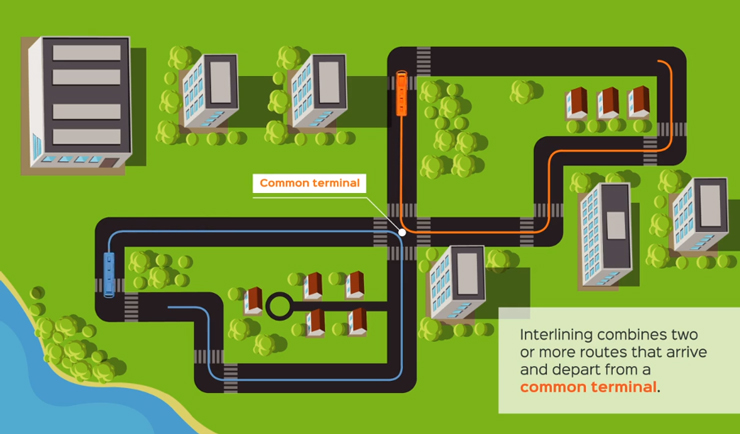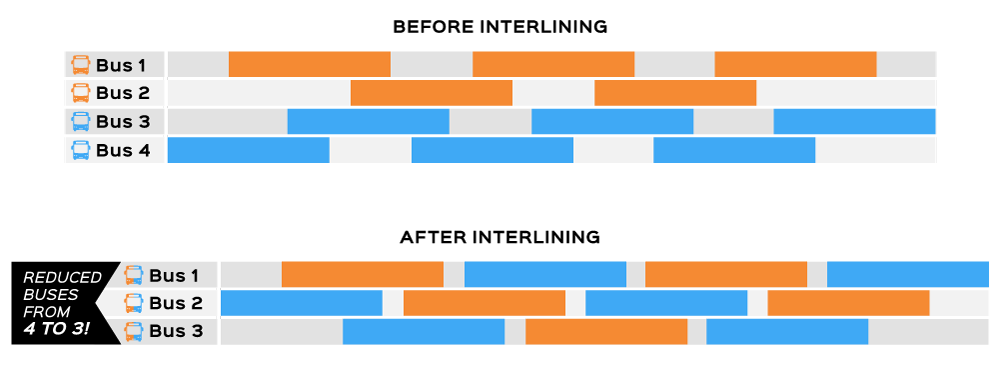Save Money and Get Better OTP with Bus Interlining

What is interlining?
Interlining is a common practice in the transit industry that combines two or more routes that arrive and depart from a common terminal. A bus can arrive at a downtown terminal as one route and after a brief layover, leave as a different route.
Watch the video below for an overview
What are the benefits of interlining?
- Better use of resources: Interlining allows agencies to deliver the same level of service with fewer vehicles and drivers. Further, it is better for the environment since interlining reduces extensive layovers and resulting gas consumption.
- Better on-time performance: Interlining absorbs the occasional expected delay in the less reliable route, helping to keep the bus on-time.
- Better for drivers: If one route has plenty of time in its schedule, while another can be tight at times, interlining the two routes helps ensure drivers have sufficient layovers. Additionally, driving multiple routes adds variety, and with electronic paddles and advance turn alerts, variety doesn’t mean drivers have to memorize multiple routes.
- Greater passenger convenience: Interlining routes can minimize the need to transfer. Let’s say in Metro City the college is on the east side of town, while the university is on the west side. Students travelling between the campuses have to transfer buses at Union Station. By interlining these two routes, the students could stay on the bus.
What do the numbers say?
We did some number crunching based off of industry averages and best practices, and found surprising savings with interlining even two routes.

In the example above, before interlining, four vehicles and drivers were required to serve the Orange and Blue routes. By interlining these two routes, only three vehicles and drivers would be required to deliver the same level of service.
How much would an agency theoretically save in this example? Let’s assume that a bus operates 19 hours a day, 6 days a week at an average operating cost is $140/hour. Eliminating the need for one bus could translate to operational savings in excess of $800,000 per year!
How does Streets help support interlining?
Using Streets visual blocking and run cutting tool makes it easy to identify opportunities for interlining. Head sign integration ensures that signage always reflects the correct route and passenger information is reliable. And lastly, Streets makes sure agencies are still getting accurate mileage, ridership and time data for each route.
In summary
When interlining is supported by accurate data and solid scheduling, it benefits the agency, and drivers and riders. It’s a rare case of win-win-win.


